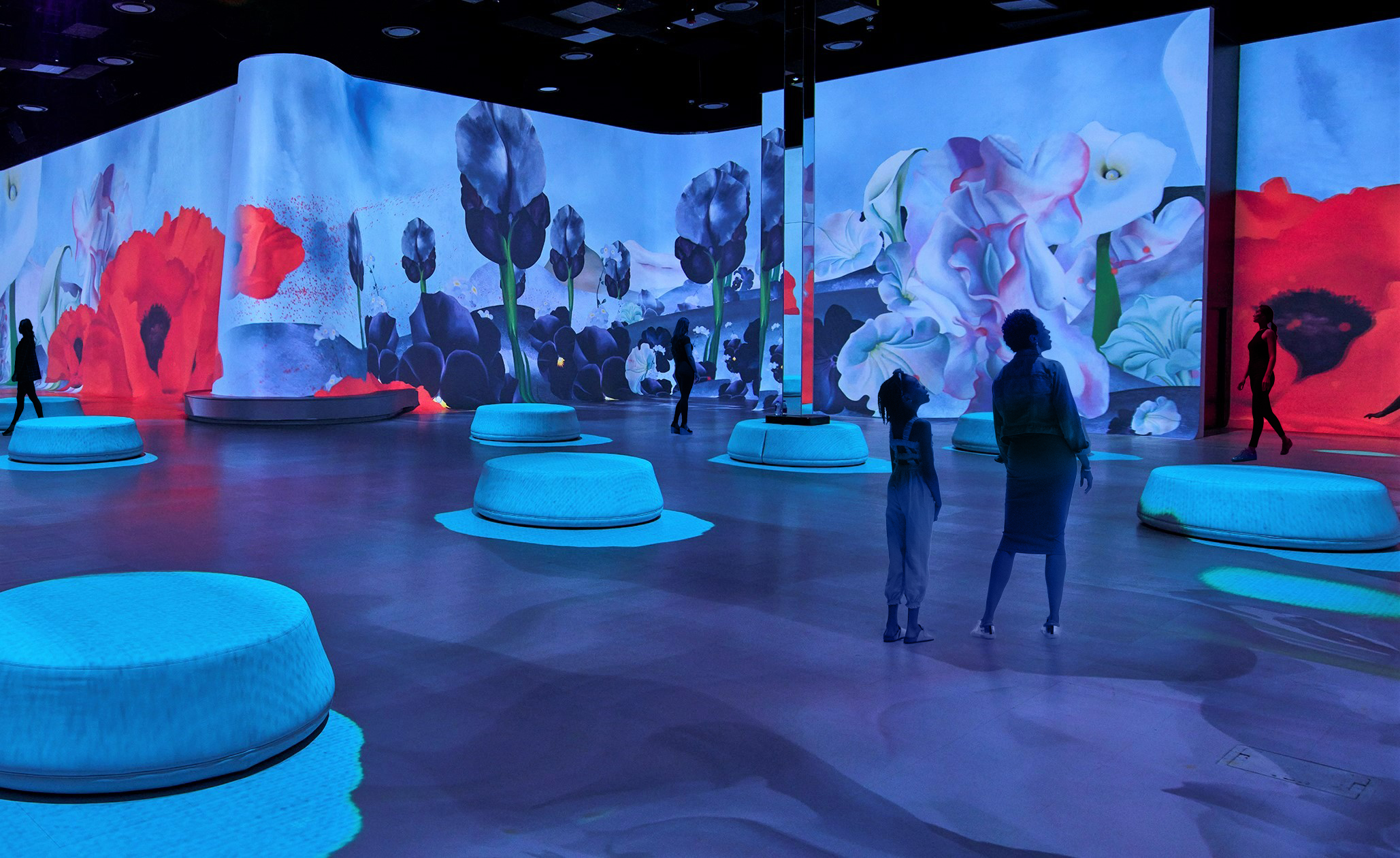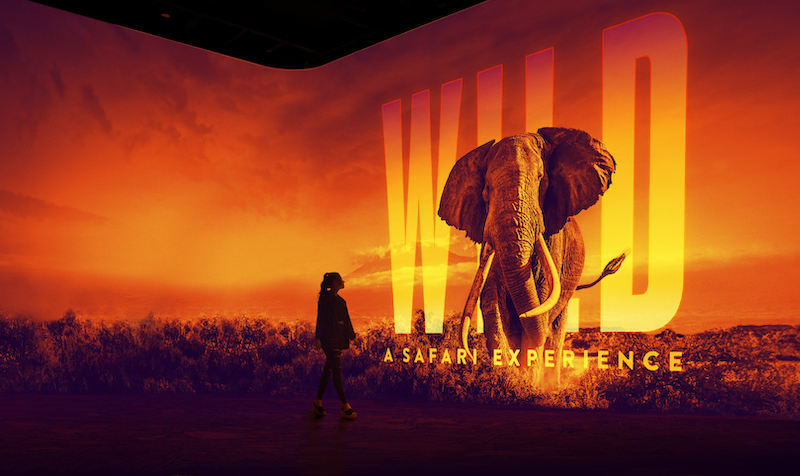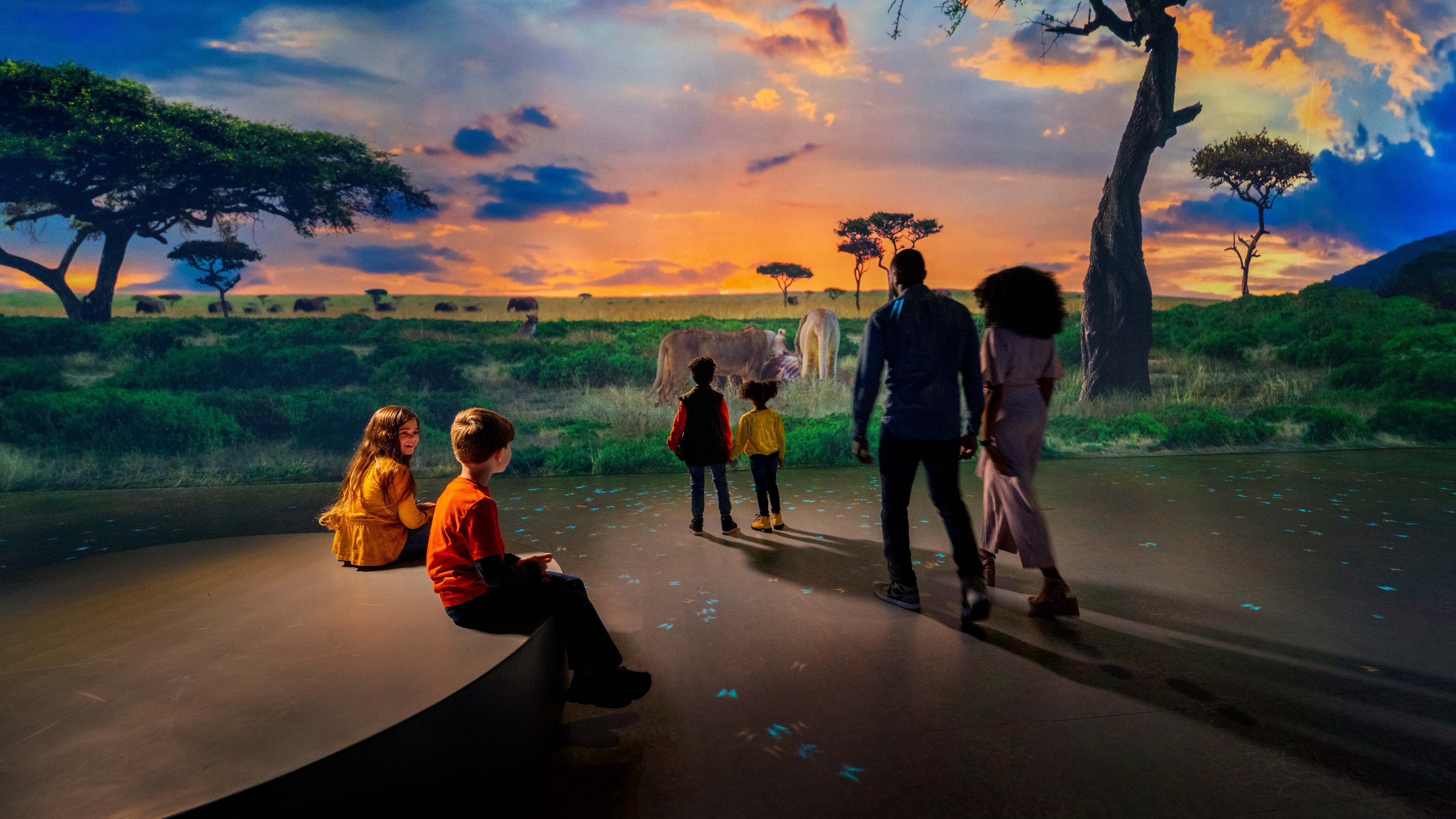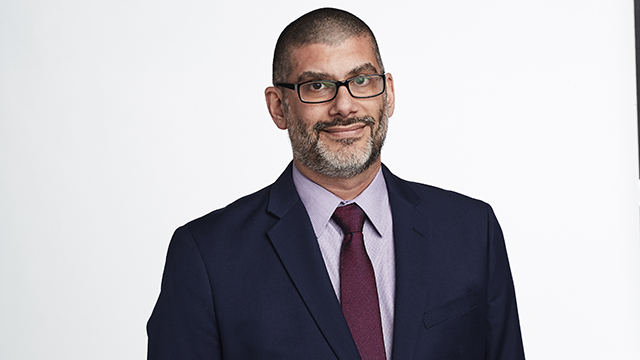Whether it is visiting the plains of Africa on safari or traveling to the depths of space, Illuminarium Atlanta provides a thrilling and completely immersive experience for guests. Using Panasonic projectors, a sound system from HOLOPLOT, and Powersoft's Mover system to create sound-accurate vibrations, visitors get transported to worlds they’ve only imagined of visiting.

There are plenty of adventures—typically spanning from 45 minutes to an hour—from which to choose. WILD, for example, is a virtual safari in which the content was filmed on location around Africa over a span of several months. Guests are transported to different countries and places with very little CGI, bringing a realism to the native species.
Selecting the right projector for the job was obviously imperative. “We courted all of the major brands,” explained Brian Allen, executive vice president of technology and content integration at Illuminarium Experiences. “When designing this venue there was a no-stone-left-unturned attitude, so we talked to everybody.”
A Unified Vision
After a final projector shootout in Orlando in 2022, the choice was clear. “We settled on the Panasonic PT-RQ50K," Allen said. "We liked the brand because they have been road tested and have been in extreme conditions. The color reproduction is fantastic—it's unlike anything I’ve seen.”
Allen and his team settled on 10 projectors for the smaller room and 36 in the larger space at the Atlanta location. However, there was an additional factor in going with Panasonic, one much more important in the changing environment of location-based entertainment.
[Large-Venue Projectors: Key Features for Presentations in Big Spaces]
“Panasonic shined in the relationship,” Allen explained. “It’s one thing to have a great product, but it’s another thing to share the vision of where we are going. They fundamentally understood that immersive attractions are a big part of the future of entertainment. So much so, they were willing to design a custom lens for us. Anyone can have a great product, but not everyone can have a great relationship. That’s what it came down to.”
That ultra-short-throw lens was the solution to several challenges, including “weird angles,” having to house everything in the ceiling, and the need to cover all the surfaces in the shows. That custom lens is now being used in Illuminarium's location in Las Vegas, NV, and will continue to be used in future endeavors. However, the approach in the Atlanta location was a bit unique because the lens was still in production when Atlanta was ready to open its doors.
[Panasonic Delivers an Immersive Educational Experience at Texas A&M]
“Atlanta was setup in a hybrid approach,” Allen explained. “So, for the floors, we used Panasonic RQ32Ks, which are not native 4K like the 50, but they had the ultra-short-throw lens. We used the 50Ks for the walls, and actually had to flip a few projectors to portrait because we didn’t have enough throw distance. It was a tradeoff.”
Leap of Faith
Now, what did Allen have in mind for where to project these high-quality projections? The venue wouldn’t use a traditional screen, nor simply a wall, but what Allen called, “a sheet-rock-built screen. We had to invent a wall. We were very meticulous, we put a very high standard on the wall. We kept explaining, ‘you’re not building a wall, you’re building a screen.’ They had to pay close attention to any sort of undulations or waves or bumps or tape marks, because that will show up. Plus, they are also sound isolation walls. It was quite a big endeavor.
“It’s an attitude. It’s not just a normal wall. This is the surface of our attraction. You can mess up in the bathroom, you can mess up in the café, but you can’t mess up here.”

For the sound, Allen and his team went with HOLOPLOT. According to Allen, the company is one of the only that does true wave field synthesis and beamforming on a large scale. “HOLOPLOT has built these modules that are true speaker arrays," he explained. "They have 96 drivers in each module. And each module has an entire electronics package, like its own mini audio computer station.”
However, it was a risk. As Allen recalled, Illuminarium was HOLOPLOT’s first U.S. installation, so the Illuminarium team took a leap of faith.
As yet another partner that values the Illuminarium vision, teaming up with HOLOPLOT paid off. “HOLOPLOT can steer vertically, but also horizontally,” Allen noted. “That’s where they really shine. They can isolate a beam, reflect off a wall, and hit somebody. The larger the array, the more steerability.
“So, we have three levels that give you this halo of sound. That’s important, because we want to localize sound. The immersion doesn’t come just from the visual, it comes from the layering of the audio and the visuals, so when you see that elephant walk across the space—the sound is coming from the elephant. It’s not coming from overhead, or from your left ear—it’s right there.”
The Atlanta location also adds to the immersive experience with Powersoft's Mover technology, which creates realistic moving sensations on the floor, such as simulating the feeling of an elephant's stomp. More than 140 compact Mover linear transducers were deployed across the facility, tasked with adding "feel" to the show by delivering sound through vibrations, along with 12 Quattrocanali 4804D amplifiers for low frequency reproduction.
Just Getting Started
The shows are mostly automated, but there is onsite technical staff as well as remote staff that can monitor any issues. The additional support is strategic, as the Atlanta location was designed as a multimodal space—there are corporate functions, private events, even the ability to stream sporting events. The system was designed with the flexibility to take guests on an adventure with the crew of Apollo 11 or have a DJ spin tunes for a dance party.
[Open for (Immersive) Business]
There is a core production team at Illuminarium Atlanta for content, but the company also partners with Radical Media, which helped produce the first three shows. Illuminarium also consults with other creators. For example, it just launched a children’s show about Alice in Wonderland (Waking Wonderland) with Canadian partners Entertainment One, which runs on Unreal Engine.
That just adds to what is offered, both in content and how its delivered. Along with WILD and Waking Wonderland, guests can choose the 2D Georgia O’Keefe show based on her book, One Hundred Flowers, or travel into space with Apollo crews in an immersive 3D and CGI experience, all brought to life with the detail and high-quality performance of Panasonic projectors.

“When we release a show, we don’t stop working on it,” Allen said. “We actually continue working on it because we want to make it better. The WILD you saw in 2021 is not the WILD you’ll see today. And this is all based on feedback from our guests. We heard someone didn’t see enough gorillas, so we sent some wildlife photographers to capture some silverback gorillas in Rwanda. We don’t claim to have all the answers. We just want to make it as good as we can, and I think that’s where we shine. It is our ever-living content.”
Allen is excited for the future of new Illuminarium Experiences, with cities like Miami, Dallas, and Chicago on the horizon. He also envisions a day when the Illuminarium is on a global scale in cities across the world.
The Illuminarium tagline is: “We want to democratize the world’s most extraordinary experiences.” But for Allen, that’s just the start. “I want to democratize this format for content creators," he added. “The technology supports the content and helps further it. But without the content, we’d be nothing.”

